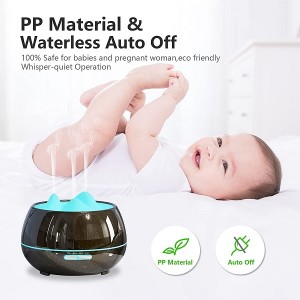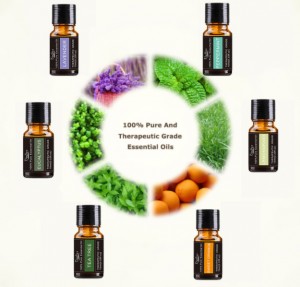
BENEFITS OF ESSENTIAL OILS FOR SEASONAL ALLERGIES
Seasonal allergies impact millions of people and can be experienced seasonally at the onset of spring or autumn, during the summer,
or even in the winter. Conversely, they can be chronic allergies with symptoms that last all year. Allergies can be triggered by a range
of allergens, such as dust, mold, pollen, food, dander, insect bites, specific materials. They are often associated with inflammation,
itching, and redness, sneezing, coughing, congestion, runny nose, itchy and watery eyes, headaches, nausea, dizziness, and difficulty
breathing. Allergies may also be experienced topically in the form of hives, eczema, or dermatitis.
Although allergies do not have any cures, there are ways to help keep their symptoms under control, and Essential Oils may offer respite
when used to complement traditional allergy treatments. Essential Oils can be valuable year-round, not only for their scents – especially
those with bright, cheerful, and invigorating fragrances – but also for the anti-bacterial property that many are reputed to exhibit, which
helps to facilitate recovery from seasonal complaints. Furthermore, many of them are known to help ease stiffness, body aches, and spasms that may arise.
Popular Essential Oils for seasonal allergies include citrus oils, which have calming scents that are said to have mood-boosting and uplifting
effects on the mind, thus helping to decrease the sense of emotional stress that comes with physical suffering. Oils with cooling qualities,
such as Eucalyptus and Peppermint, are commonly used to address other common symptoms of allergies, as they have clarifying, expectorant,
energizing, anti-bacterial, and anti-inflammatory qualities that are reputed to reduce respiratory discomforts and body aches.

HOW TO CREATE ESSENTIAL OIL BLENDS FOR TOPICAL USE
To create a small roll-on blend, start by selecting a small number of oils to combine, such as 3 Essential Oils, and 1 Carrier Oil in which to
dilute them. For a 10 ml roller bottle, simply add 2 drops of each chosen Essential Oil to the vial and fill the rest of it with the Carrier Oil.
Next, cap the bottle and shake it well to ensure that all the oils have been thoroughly combined. To use it, simply stamp or roll a small
amount of the blend onto the preferred area of skin, such as the wrist, and allow the fragrance to naturally waft.
To create an oil blend that can also help to target allergy symptoms, consider adding one or several of the abovementioned essential oils
to a diffuser blend, roll-on blend, scented bath, or any other application method; however, it is recommended that massages be avoided
during an illness, as they are reputed to increase the likelihood of the symptoms becoming aggravated.

Post time: May-20-2022